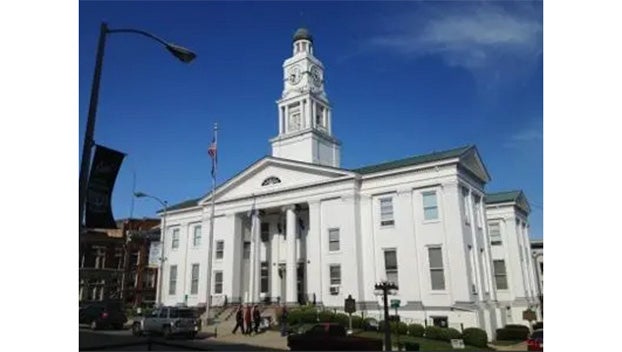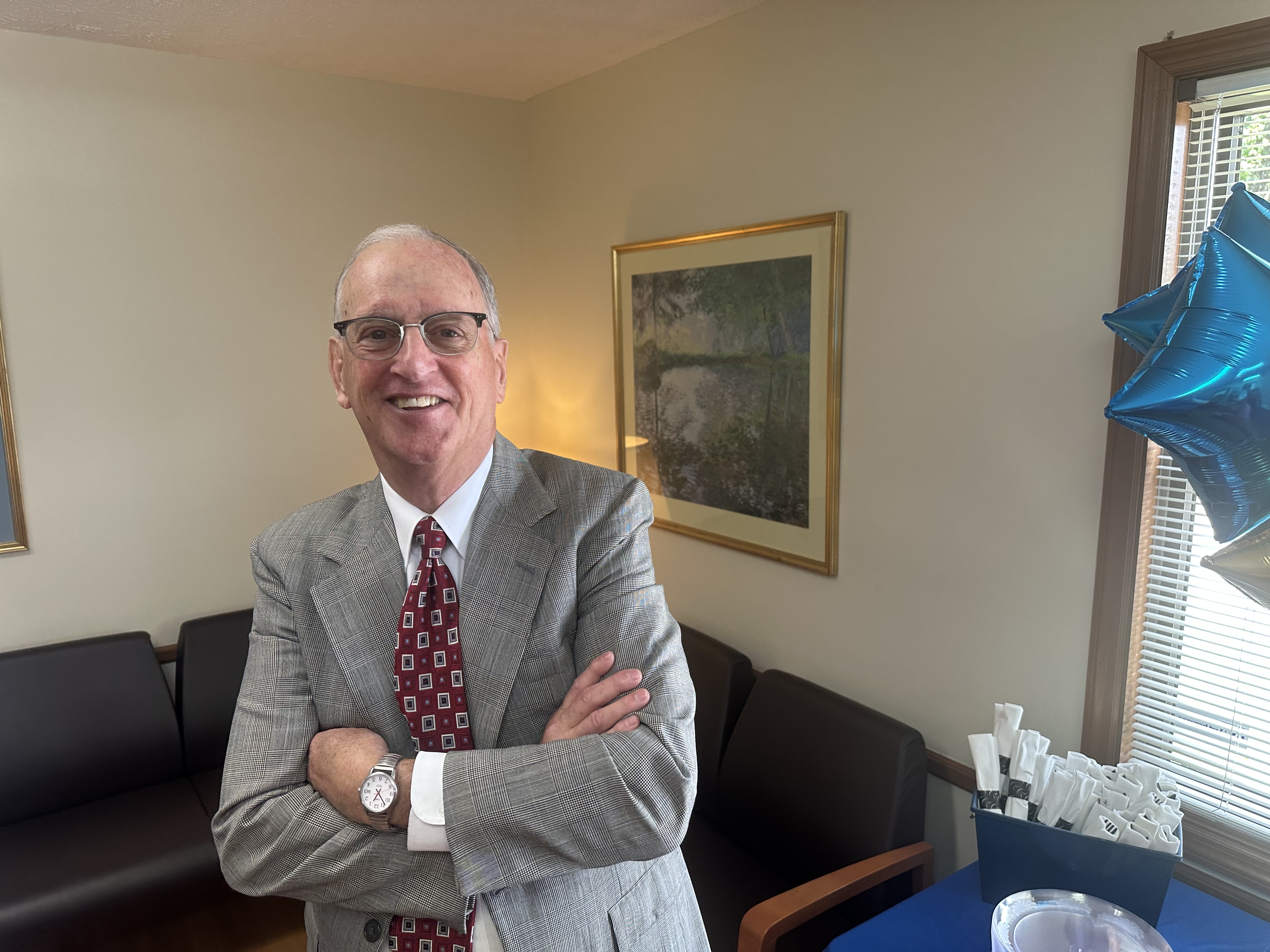Enoch: Gobble! Gobble! Turkey farming in Clark County
Published 6:00 am Saturday, November 11, 2023

- Perry Browning is shown standing in the midst of turkeys on one of his farms. (William B. Ogden Studio photo)
|
Getting your Trinity Audio player ready...
|
By Harry Enoch
Contributing Writer
This is the first part of a multi-part series.
In the 1960s, Clark County was famous for its turkey farms—the “Turkey Capital of Kentucky.” Clare recalls that when she and her brother Barry were kids, they used to ride their bikes out Waterworks Road. When they came to the Browning turkey farm, just for fun they would yell, “Gobble! Gobble!” and the response would come back “Gobble! Gobble!” from thousands of turkeys. Ah, nothing like those good olé days.
When Perry Browning started in business in Winchester he operated a coal yard, a small chicken hatchery, and sold animal feed on Jefferson Street. In 1938 he began raising turkeys for the Thanksgiving market. In 1941 Clark County held its first turkey farm tour; 125 persons visited the farms of Charles Berryman on Wades Mill Road, Shelby Harris on White-Conkwright Road, and Perry Browning on Waterworks Road.
When Eugene Culton, county agent, led the third annual tour in 1943, seven farms were visited: Perry Browning, the largest with 6,500 birds; Charles Berryman; Henry Berryman; Shelby Harris; James Harris; and Milt Creech. These farms together produced more than 13,000 turkeys.
By the year 1944 turkey raising had become big business in Clark County. The production of turkeys, turkey eggs and poults was valued at $250,000 a year, exceeding that of registered Angus cattle (worth $210,000) and pure-bred Southdown sheep (about $200,000). That September producers formed the Clark County Turkey Growers Association. Members included Browning, 15,500 birds; the Berrymans, 4,500; Neal, 1,200; Charlotte Pursley, 1,000; Shelby Harris, 850; James H. Harris, 700; Mrs. Justice Johnson, 600; Eugene Culton, 350; Elmer Barker, Mrs. Calloway White and Mrs. Elmer Duncan, 200 each. That year the turkey field day attracted 300 persons representing 8 states and 20 Kentucky counties.
It may seem a little surprising to see the name of four women on the list of turkey growers. These were the war years and farm wives often helped supplement their families’ income. In her book Of Family and Place, the late Joan Mayer described her mother’s, Charlotte Pursley’s, experience raising turkeys. Her husband, Fauntleroy, had built her a small turkey house and she brought her first batch of chicks home.
“Trying to get all the babies to eat was a maddening, frustrating task. Mom began to stress out. She had hundreds of baby turkeys rushing about the building in a state of panic, refusing to eat. After an hour or more of trying to hold one and then another up to their ‘plate of food’ without success, she had visions of a huge herd of baby turkeys lying huddled around the sawdust floor in heaps, having died of starvation in her brand-new brooder-house.
“She decided to call Daddy’s cousin Perry Browning, nationally recognized as one of this country’s largest producer of turkeys. He gave Mom several suggestions on how to remedy the problem.” She immediately headed to town. “On her return, she took from her car a large, lumpy sack and carried it into the building. Later, she was again holding a baby chick over the long metal food trough filled with the sandy looking food. Only now, the troughs also contained numerous, brightly colored ‘playing marbles’ which she had bought at the Winchester Ten- Cent Store and had scattered on top of the feed.” The chicks immediately began to peck at the marbles, picking up some grains of food as they did. “This was the routine Mom went through every spring with each new brood of turkey chicks, teaching them to ‘play marbles’ and eat at the same time. She was a hard-working, diligent turkey producer [and] she made a profit from her enterprise.”
In 1944 Browning’s 15,500 turkeys ranged over 250 acres of grassland. Voracious eaters, they consumed almost 6 tons of feed—corn, when mash and oats—daily, and drank about 5,000 gallons of water every twenty-four hours. The farm had 50 grain bins, 1,200 open feeders, 200 roosts, and 15 watering tanks. The birds averaged 22 to 25 pounds when sold. Two armed guards watched the roosts at night to dissuade thieves and varmints. Eggs collected from the hens were taken to his hatchery in Winchester to produce new poults to raise.
Browning’s operations soon needed more land to raise his turkeys. In addition to his main farm on Waterworks Road, he began raising turkeys on Muddy Creek Road two miles from Winchester and at the Smith farm (now Stoney Brook subdivision) on Boonesborough Road three miles south of town.
In 1954 Browning built a new turkey processing and storage plant beside his hatchery on North Maple Street (on the west side between Washington and Broadway). The 20,000 square foot facility employed 100 persons and processed 3,000 toms and 4,000 hens per shift. He also built a feed mill to process all the grain consumed by his birds. By that time, Browning was the larger turkey grower in the state and had been elected president of the National Turkey Federation. That November he traveled to Washington, DC, with wife Isa and daughter Dixie to present a turkey to President Eisenhower.
That year, the state produced 312,000 heavy-breasted bronze turkeys. Although Kentucky ranked 29th in U.S. turkey production, Browning was one of the largest individual growers in the country. While most turkeys were grown for the Thanksgiving and Christmas season, Browning worked hard to promote the meat as year-round fare.





